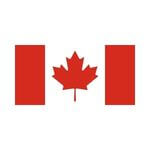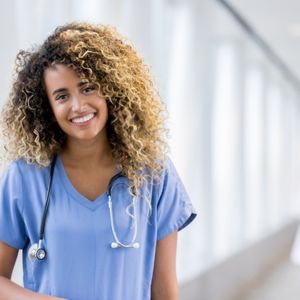Echocardiography Course in Bangladesh
AIHST-BD offers Echocardiography Course. We build Skills for migration to USA, Canada, UK & Middle East.
Be Skilled for foreign career




Echocardiography Course for physicians
AIHST BD is now offering you a 3-month-long Echocardiography course in Dhaka, Bangladesh. Echocardiography generates pictures of your heart using sound waves. Your doctor can watch your heart beating and pumping blood with this routine test. Your doctor may use Echocardiography to diagnose heart problems.
The Benefits of Echocardiography
Echocardiography is now regularly utilized in the diagnosis, therapy, and follow-up of patients with any type of cardiac illness, whether suspected or known. It is one of the most used diagnostic imaging techniques utilized in cardiology. It can give a plethora of useful information, such as heart size and shape (internal chamber size measurement), pumping capability, the location and amount of any tissue damage, and valve evaluation. Echocardiography can also provide doctors with various estimations of heart function, such as cardiac output, ejection fraction, and diastolic function.
Echocardiography is a valuable method for detecting aberrant wall motion in individuals with suspected heart illness. It is a technique that aids in the early detection of myocardial infarction by demonstrating regional wall motion abnormalities. It is also useful in the management and follow-up of patients suffering from heart disease by evaluating ejection fraction.
Cardiomyopathies such as hypertrophic cardiomyopathy, dilated cardiomyopathy, and others can be detected with echocardiography. Stress echocardiography may also be used to identify whether any chest discomfort or accompanying symptoms are caused by heart disease. The most significant benefit of echocardiography is that it is non-invasive (does not need breaking the skin or accessing bodily cavities) and has no known hazards or adverse effects. An echocardiogram can not only provide ultrasound pictures of cardiac structures, but it can also produce an accurate estimate of blood flow through the heart by Doppler echocardiography, which uses pulsed- or continuous-wave Doppler ultrasonography. This enables the evaluation of both normal and pathological blood flow via the heart.
Techniques of Echocardiography
While completing the echocardiography course, it is important to know its methods. There are 3 techniques for doing echocardiography:
- Transthoracic
- Transesophageal
- Intracardiac
The most frequent echocardiography method is transthoracic echocardiography (TTE). TTE involves the placement of a transducer along the left or right sternal border, at the cardiac apex, at the suprasternal notch (to provide a view of the aortic valve, left ventricular outflow tract, and descending aorta), or over the subxiphoid area. It can produce 2- or 3-dimensional tomographic pictures of the majority of major cardiac structures. TTE is a non-invasive imaging method that diagnoses right and left ventricular function and wall motion, chamber size and architecture, valve structure-function, aortic root structure, and intracardiac pressures.
What is the purpose of a transducer?
A transducer on the tip of an endoscope provides imaging of the heart through the stomach and esophagus in transesophageal echocardiography (TEE). When a transthoracic examination is technically problematic, such as in obese individuals or those with chronic obstructive pulmonary disease, TEE is utilized to assess heart abnormalities (COPD). Because it is closer to the esophagus than the anterior chest wall, it exposes more detail of minor aberrant structures (e.g., endocarditic vegetations or patent foramen ovale) and posterior cardiac structures (e.g., left atrium, left atrial appendage, interatrial septum, pulmonary vein architecture). TEE can also generate pictures of the ascending aorta, which originates beneath the third costal cartilage; structures 3 mm in size (for example, thrombi, vegetations); and prosthetic valves.
A transducer on the head of a catheter (inserted through the femoral vein and threaded to the heart) provides a viewing of cardiac architecture during intracardiac echocardiography (ICE). ICE can be used during difficult structural or electrophysiologic cardiac surgeries (for example, percutaneous closure of atrial septal defects or patent foramen ovale). When compared to TEE, ICE delivers greater picture quality and reduces process time for these operations. ICE, on the other hand, is often more costly.
Certificate Course in Echocardiography
AIHSTBD is glad to inform you that we offer Echocardiography Course in Bangladesh.

When sound waves bounce off blood cells flowing through your circulatory system’s arteries, their pitch changes. These variations (Doppler signals) can assist your doctor in determining the pace and flow of blood in your heart.
Transthoracic and transesophageal echocardiograms commonly employ Doppler methods. Doppler methods can also check for blood flow issues and high blood pressure in your heart’s arteries, which standard ultrasonography may miss. The blood flow seen on the monitors is colorized to assist your doctor in identifying any issues.
Color Doppler and spectral Doppler are used to detecting any aberrant communication between the left and right sides of the heart, as well as any spilling of blood through the valves (valvular regurgitation), and to evaluate how effectively the valves do not open or open. Tissue Doppler echocardiography uses the Doppler method to evaluate tissue motion and velocity.
How does Doppler echocardiogram work?
Why study the Echocardiography Program at AIHSTBD?
With world-class mentors and faculty, you are sure to receive the best education. Mentors are essential for two reasons: For starters, they may correct and help you with your clinical judgment. They function as a sort of validation. Second, they will help you with your echo practice. We’ve learned that being an expert requires 10,000 hours of practice. However, knowing what to practice is critical. A competent mentor will identify gaps in your understanding and technical skills. And will assist you in directing your attention and effort toward these areas.
Moreover, we help you prepare for the ARDMS Echocardiography test so you can get become a certified Echocardiographer and start your career!
FAQ
Certainly. We understand our students cannot always travel to our campus to attend classes. For them, and for our international students, we have kept the option of attending online classes open. Our faculty is highly equipped and trained to conduct online classes for the utmost convenience of our valued students.
Our 3-month diploma echocardiography course covers all the basics of echocardiography.
It can be challenging but nothing you can’t achieve with determination, effort, and will. Above that, you have our helpful and expert teachers to guide you through it.
It is a fantastic career path. If you want to work with cutting-edge medical technology, save lives, and make a good livelihood, be a diagnosis ultrasound technician
(or Echocardiographer). It also ranks among the fastest-growing allied health disciplines.
The primary difference between ECG and ECHO is that ECG displays the electrical system of the heart. Whilst ECHO displays the mechanical system of the heart for further inquiry and treatment planning of the particular patient.
